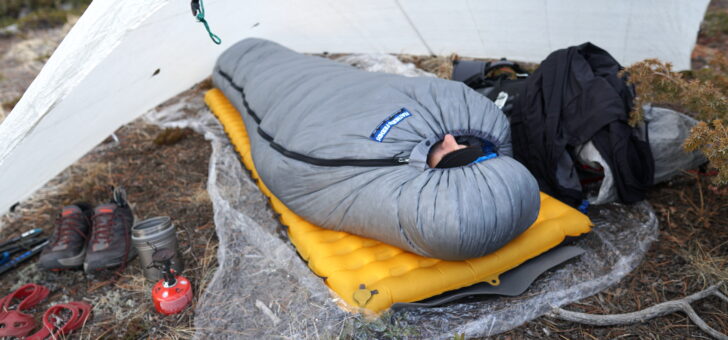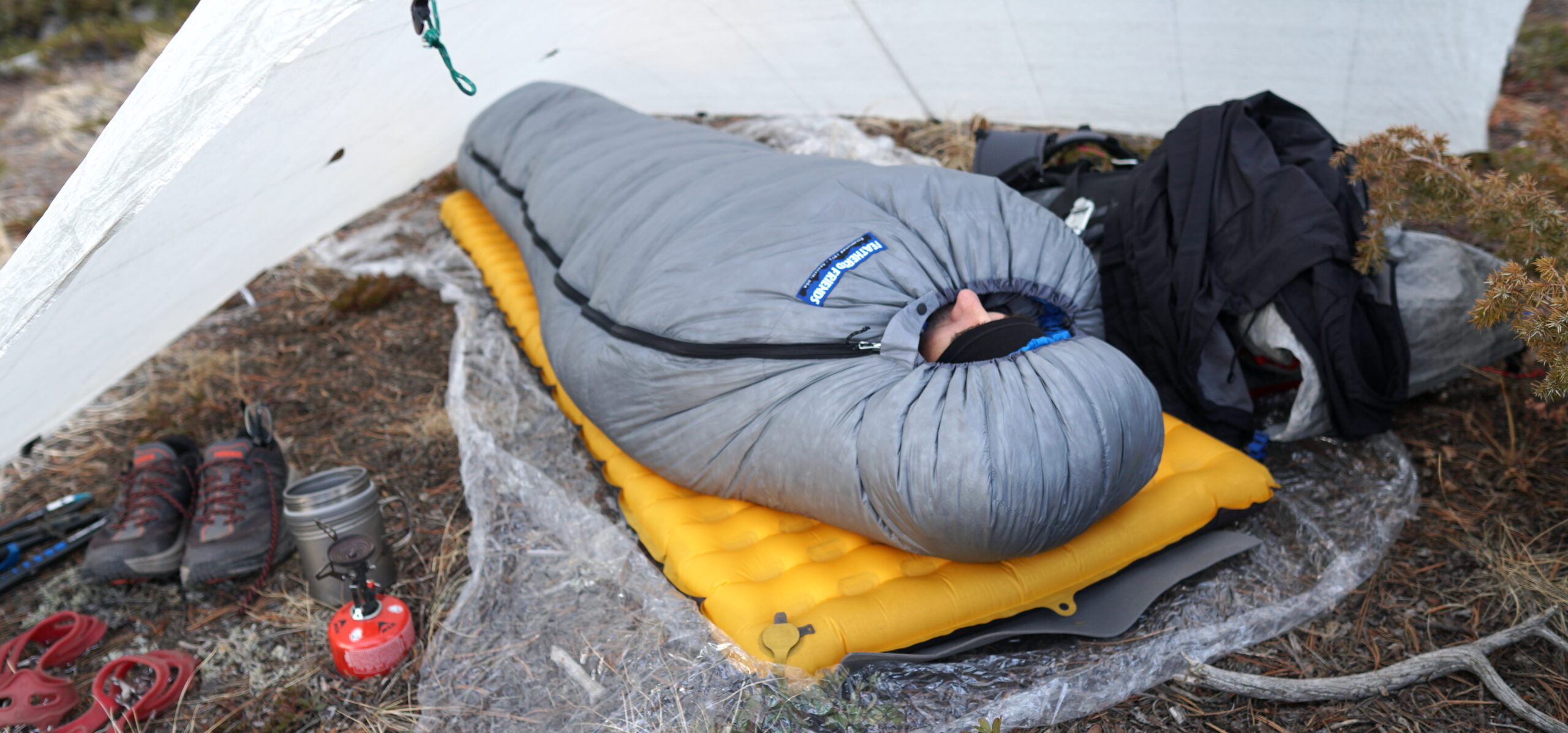It’s really dry in Wyoming this year. There’s no snow on the ground at 8,000 feet.
But it’s cold.
Overnight lows have been in the single digits F and daytime highs aren’t high enough for water to be readily available.
That posed a unique challenge – ice abounds, but not much water. So staying hydrated is an issue. Watch this video to see my solution:

Here’s what else I like to do when the temps are frigid but the snow is missing.
1. I still like to camp in a tarp.
There’s something about tarp camping when it’s cold that’s really satisfying. Winter winds don’t arrive in Wyoming until late winter/early spring, so late fall/early winter is still a great time to tarp camp.
My favorite tarp has always been, and will continue to be, a 9-foot-square DCF tarp.
Here’s a trip report video where I used a tarp like this during the Wyoming winter:

Currently, I prefer the Hyperlite Mountain Gear Square Tarp. It’s well-made, has plenty of tie-outs for flexible pitch options, and best of all, it’s lasted several years for me. Mine is a 2012 model (1st generation), and it’s still going strong eight years later.

2. I spend my weight on sleeping bag and insulating clothing warmth.
Short days, long nights. I spend a lot of my time in my sleeping bag during the winter.
I like to experiment with quilts in the winter, but I prefer the coziness of a mummy sleeping bag that offers enough girth for layering a puffy down jacket and pants, and to side sleep.
My favorite premium mummy bag, which I’ve used for several years now, is the Feathered Friends Lark UL 10. When I pair it with my PhDesigns Yukon Pullover and Western Mountaineering Flash Pants, I’m very comfortable down to 10 below F.

3. Don’t ignore your mattress.
My luxe pad is the Nemo Tensor Insulated Sleeping Pad.
It’s not ultralight per se. But in terms of comfort (for me), the regular length, wide width, is better than sleeping on my bed at home.
When temps drop, I add the Gossamer Gear Thinlight CCF pad – 1/8″ is plenty on dry ground, but go with 1/4″ thick for sleeping on snow in subzero conditions.
4. Keep your hands warm.
I don’t opt for ultralight handwear in the winter.
Your hands are too valuable. You need to operate stoves, deal with first aid supplies, manage navigation tools.
Keep. Your. Hands. Warm.
Ultralight: fleece mitts + waterproof-breathable mitten shells.
Light and warmer: high-loft insulating mitts like these.
Warmest and safest: vapor-barrier mitts.
5. Cold feet no more.
Let’s keep this really simple, and really effective:
- Oversize your winter shoes by one full size to accommodate thicker socks and waterproof socks. Thick-midsole shoes add more insulation.
- Go with a mid-height waterproof-breathable shoe. They’re warmer.
- Layer a thick wool sock under a Gore-tex sock inside your shoe.
- Change socks when you get to camp.
- Wear a calf-height gaiter.
6. You can still squeeze a lot of performance out of a canister stove.
No snow on the ground but you can be creative and still acquire liquid water (see video above).
That means you can eek out a little more performance from your lightweight 3-season stove.
I use the MSR Pocket Rocket Deluxe because it’s the best performer in cold and wind among upright (lightweight) canister stoves.
Your strategies?
When temperatures drop but snow hasn’t fallen, what are your tips for staying warm, dry, safe, and comfortable in the backcountry?





Home › Forums › Winter Backpacking When There’s No Snow?